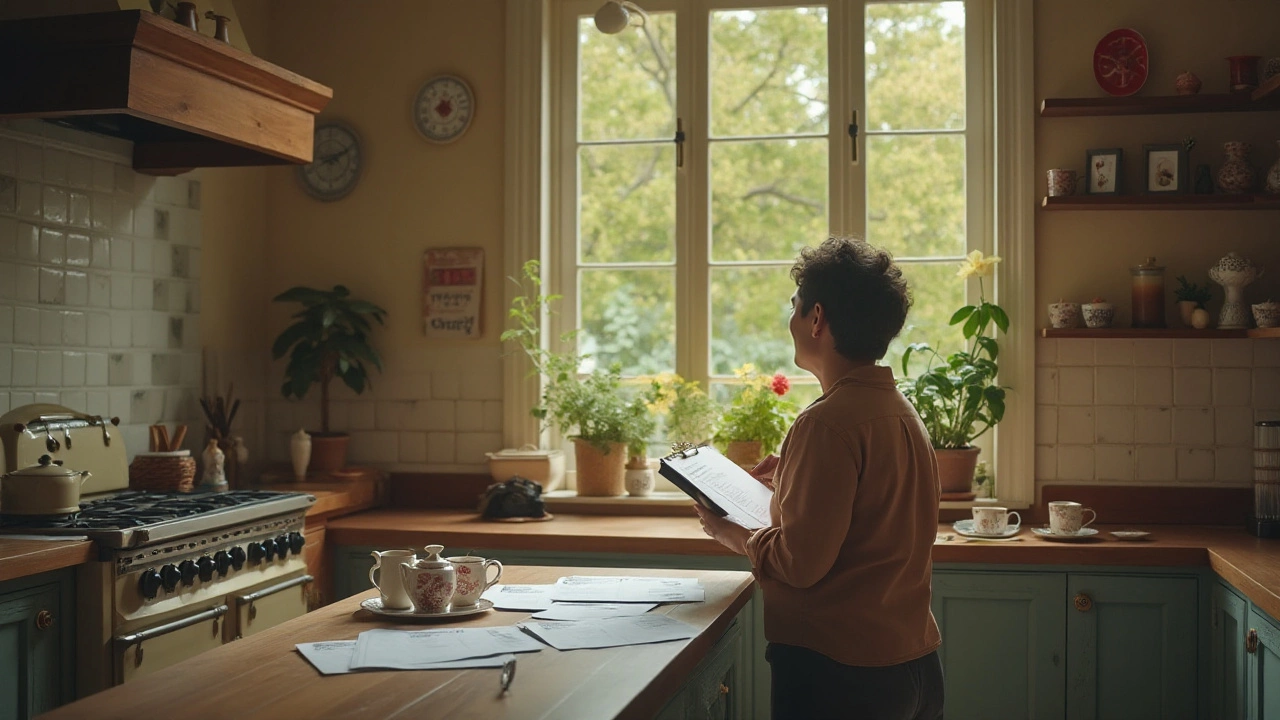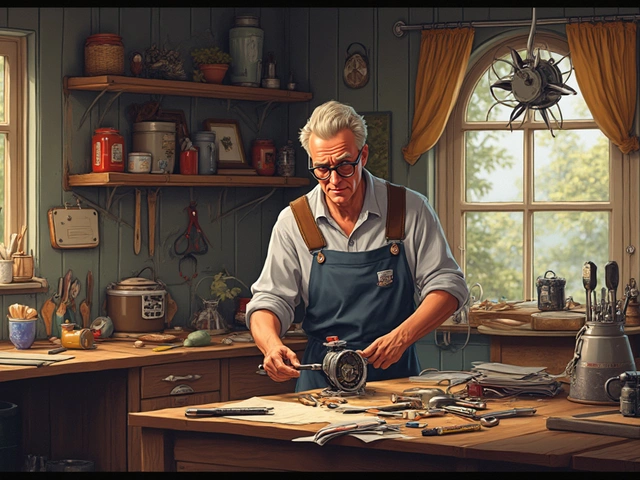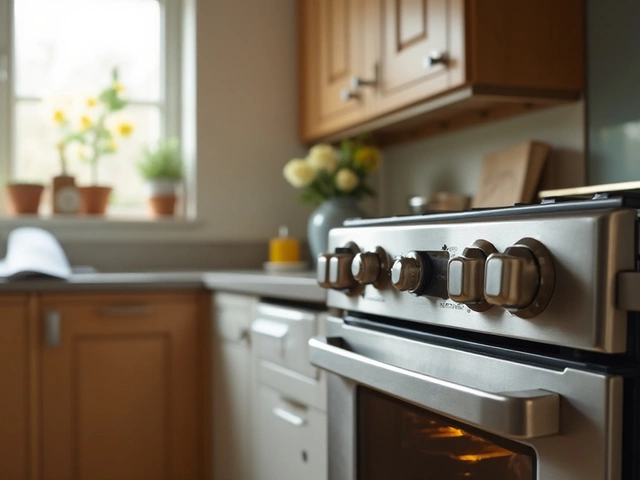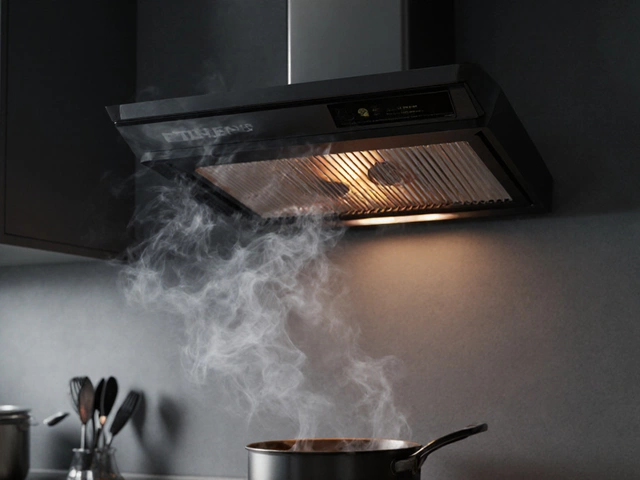When it comes to household appliances, ovens are workhorses in the kitchen. But as they age, questions about maintenance and longevity often arise. Is it worth repairing a ten-year-old oven, or is it time to invest in a new one? The answer might not be straightforward, but with the right information, you can make an informed decision.
Consider the typical lifespan of an oven, factoring in how frequently it's used and any recurring issues that might have occurred over time. Costs associated with repairs can influence your choice, but it's not just about dollars and cents. Energy efficiency plays a vital role, as older ovens may cost more to operate than their newer, more efficient counterparts.
We'll also look into common problems that plague aging ovens, from faulty heating elements to finicky controls. With practical tips and expert insights, this article aims to guide you through the process, ensuring your culinary centerpiece continues to serve up delightful meals for years to come.
- Understanding the Lifespan of Ovens
- Cost Analysis: Repair vs Replacement
- Evaluating Energy Efficiency
- Common Issues with Older Ovens
- Tips for Making the Right Decision
Understanding the Lifespan of Ovens
When you first install an oven in your home, it’s like bringing in a dependable partner for your culinary adventures. But just like any partnership, it’s crucial to be aware of its phases and what to expect as time marches on. The average lifespan of an oven is typically around 10 to 15 years, but this can vary significantly based on usage, maintenance, and wear and tear. Ovens that are frequently used or subject to heavy-duty cooking might face early signs of aging compared to those basking in occasional Sunday roasts.
The brand and model can also play a pivotal role in its durability. Some brands are known for their robust build quality, capable of withstanding the test of time, while others might not fare as well. Regular cleaning and maintenance can significantly extend an oven’s lifespan. Removing gunk and grime not only keeps the appliance looking pristine but also ensures efficient operation. Dirt and debris buildup can force the oven to work harder, increasing the likelihood of breakdowns.
Interestingly, a survey of appliance owners revealed that the ratio of failure among older ovens is higher for those that skipped routine inspections or ignored minor glitches. Addressing issues when they first appear, such as a strange noise or uneven heating, can save you from more extensive—and costly—repairs down the line. A strong argument can be made for paying attention to these things.
“A stitch in time saves nine,” is an old adage that rings especially true for appliance care, advises appliance expert John T. Norwood.
Consumer habits and trends have shifted with the availability of modern, energy-efficient models. These newer ovens not only promise lower electricity bills but come with advanced features that your decade-old model might lack, such as smart technology integration. As such, the availability of more efficient options can influence decisions about whether repairing is worthwhile.
To give you a clear picture, consider the anecdotal experiences of long-time homeowners. Many report fluctuating performance levels past the 8-year mark, which sometimes aligns with an uptick in unexpected malfunctions. While it’s not an exact science, paying attention to your oven’s specific quirks and needs is crucial. To assist in decision-making, it can be useful to track repair costs annually compared to the price of a new unit. When those costs begin to approach or exceed half of the new oven's price, it might be time to reconsider your approach.
Knowing when to retire an appliance is never an easy call, but an informed assessment of an oven’s lifespan will guide you toward the right choice, ensuring that every meal meets your expectations without unexpected setbacks.
Cost Analysis: Repair vs Replacement
In today's world, where financial decisions can make or break the budget, figuring out whether to fix or replace your trusty oven is vital. Imagine analyzing repair costs as though you were inspecting a loved one's health report, where symptoms must be weighed against the expense of new beginnings. Initially, you grapple with the thought of spending a couple of hundred dollars on repairs versus shelling out substantial sums close to a thousand for a modern replacement. The thought isn't easy; it's a dance of calculations, balancing present affordability and future savings.
To kick off this financial assessment, consider what issues a repair may solve. Your beloved ten-year-old appliance might face troubles like uneven heating or faulty thermostats; these are essential things to mend. Typically, such repairs range between $100 to $400. This can sound reasonable unless, without a doubt, you're hit with an issue outside the standard fare. That's when repair costs unexpectedly skyrocket, making replacement appear more beneficial by contrast. This realization presents itself like a bucket of cold water on a sleepy winter morning.
"Over 50% of appliance purchasers regret not investing good money in replacements sooner," reports a well-regarded consumer survey.How then do you discern when it's truly time for a new oven? There's wisdom in knowing that most ovens, especially those built to last, have an average lifespan of 13 to 15 years. This guides you to recognize the ticking time clock on an aging appliance. Perhaps, energy efficiency enters the scene as the unsung hero, tipping the scales towards something new. A replacement could trim household utility costs by introducing Energy Star ratings into your life—a hidden gem that many replacement buyers come to love.
Repair Type Estimated Cost Basic Repairs $100 - $200 Complex Fixes $300 - $500
- Check for warranty remains. Does a graceful safety net still cover you?
- Probe if parts are readily available; older models sometimes require rare parts.
- Calculate the annual savings on new appliance running costs.
You get ensnared in these choices, yet each path offers valuable insights worth considering. For those keen on kitchen maintenance, letting go might feel heart-wrenching but remember: an efficient kitchen often leads the way to an efficient lifestyle. Smart financial decisions aren't just about the numbers, they're about understanding needs versus wants, weighed against what brings more value—and joy—into your home.

Evaluating Energy Efficiency
When considering whether to repair an old oven, energy efficiency becomes a pivotal factor. With technological advancements over the past decade, modern ovens are designed to consume far less energy than their older counterparts. This translates into lower utility bills and makes them a more sustainable choice for environmentally conscious households. In fact, studies show that appliances older than ten years can use up to 50% more energy than newer models, making energy consumption a key consideration. Energy-efficient ovens often include enhanced insulation, better heating elements, and programmable cooking options that save both time and energy.
Retrofitting an older oven to improve its energy efficiency is possible but not always cost-effective. Many retrofitting options might require parts that are either hard to find or incompatible with older designs. This is why conducting a cost-benefit analysis becomes crucial. Compare the costs of potential monthly savings on energy bills against the price of either repairing the existing appliance or purchasing a new one. Kitchen maintenance experts often advise looking at the energy consumption stats available on your oven's product label or conducting an energy audit to understand its current performance.
"Investing in a modern oven is like updating the heart of your home," says Peter Simons, a leading home appliance expert.
An efficient oven not only saves energy but also enhances the overall cooking experience.He notes that features like even-heat technology and rapid preheat systems not only reduce cooking time but ensure meals are cooked to perfection without excess energy use. The quest for energy efficiency doesn't just stop at the gadget itself; how you use your oven matters too. Preheating only when necessary, utilizing the right-sized cookware, and ensuring the oven door is shut tight during cooking are small habits that can accumulate energy savings over time.Let's consider a practical example. Imagine a ten-year-old electric oven compared to a new model. The older model might consume approximately 400-500 kilowatt-hours (kWh) per year, while a newer model could cut that usage down to nearly 200-300 kWh annually. Translating this into cost savings on energy bills shows a tangible benefit over time. If we assume each kWh costs around $0.13, the new energy-efficient appliances could save around $26 to $39 each year. Multiply these savings over the typical lifespan of fifteen years for a new oven, and you begin to see the long-term benefits.
However, deciding to repair must also take into account personal preferences and cooking habits, as different oven types may offer distinct advantages. Gas ovens, for instance, typically have more even heat distribution but might lose out on energy front to certain energy-star-rated electric models. Ultimately, weighing the pros and cons in terms of energy efficiency can provide clarity on whether keeping that decade-old oven repair project on your to-do list is truly worth it.
Common Issues with Older Ovens
As with many appliances, aging ovens are prone to a variety of issues that can affect both their performance and safety. One of the most common problems encountered in older units is inaccurate temperature regulation. Over time, oven thermostat sensors can become less responsive or even faulty, leading to undercooked meals or burnt dishes. This issue isn't merely a frustration during baking marathons—it's a tangible sign that your oven might be on its last legs. Carefully comparing the cost of repairing a thermostat against investing in a new oven may be worth your time.
Another frequent complaint involves issues with heating elements. When heating elements wear out, they may struggle to reach the desired temperatures or fail altogether, leaving your meals barely warm. It's a prevalent problem in ovens past their prime, seeing that heating elements undergo immense stress throughout the years. Replacement parts can sometimes remedy this, but it's worth noting that access and availability of these parts can be an obstacle. That's especially true if the brand has been discontinued or lacks support.
Control panel malfunctions are another headache-inducing ordeal faced with older ovens. Will the display begin flickering or the buttons become unresponsive? Faulty wiring or wear can often be blamed. Perhaps you've realized while cooking that you can't set the temperature precisely or that pre-set programs don't engage. When your oven's brain is malfunctioning, it may be time to either repair the unit or bid it farewell. As energy consumption becomes an increasing concern, keeping pace with technological advances is critical. A renowned chef once said,
"The mastery of one's craft begins with the tools one knows and trusts."For those who've had a gas oven for over a decade, maintaining functioning gas lines is vital. While this often escapes prominent attention, leaks or blockages pose significant risk factors. An oven that's been in use for ten years might confront issues like weakened seals or clogged burners. Since safety cannot be compromised, professional servicing is highly recommended if you suspect gas-related problems. In some cases, exploring combined repair costs can end up steering you toward a more energy-efficient model.
In essence, understanding what can go wrong with an older oven gives you the clarity to make choices now that benefit your lifestyle and wallet. An analysis of reported incidents with older kitchen appliances reveals shared patterns of breakdowns, providing valuable insight for proactive homeowners. When you begin noticing symptoms of these problems, it usually signifies it's time to take action. By proactively maintaining and diagnosing issues early, you can extend the life of an appliance or decide when it's beyond saving. Strong decisions in kitchen maintenance are always fueled by informed knowledge and prudent judgment.
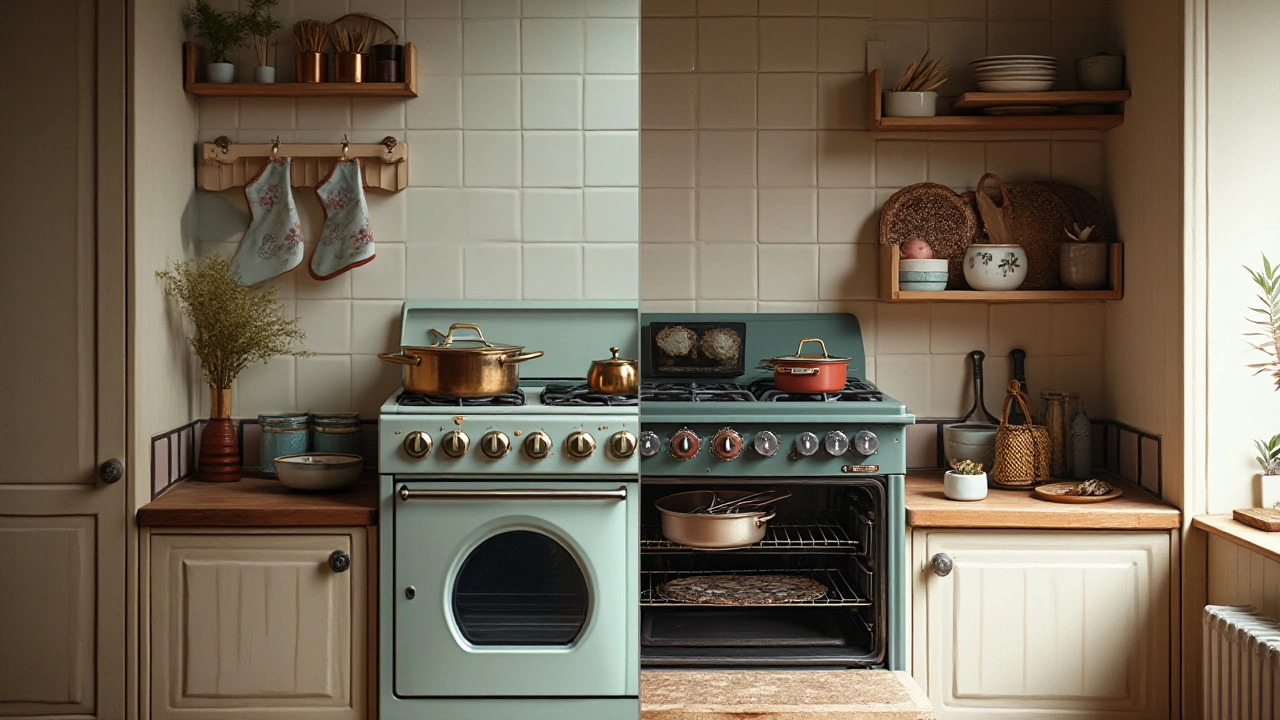
Tips for Making the Right Decision
Deciding whether to repair your oven or replace it entirely isn't just about crunching numbers. It's a blend of emotional investment, practical needs, and financial prudence. To start off, take an honest account of how attached you are to your existing appliance. Have decades of family dinners been cooked in it? If sentiment peaks your scale, the decision to repair gets a nod. Practical needs also factor in. For avid bakers and culinary enthusiasts, an oven that lags or has consistent issues can be a serious hindrance. Think about your current cooking habits and whether a new model offers features that align with your lifestyle.
The examination doesn't stop there. Understanding the potential costs of repair compared to the purchase of a new appliance is crucial too. Repairing could be a fiscally wise choice if the fixes are minor—perhaps a heating element that needs replacing or a control switch that no longer clicks with confidence. Costs can accumulate quickly though, making a replacement seem more appealing. Experts in appliance repair suggest that if fixing your oven costs more than half the price of a new model, it might be time to say goodbye to the old and hello to the new.
Energy efficiency stands as a modern-day decider. Older ovens may have soul, but their thirst for power often reflects on your electricity bill. Today’s models are designed with efficiency in mind, significantly reducing energy consumption. In some cases, the amount saved on energy bills can offset the initial cost over time. Imagine baking at peak performance while being eco-friendly, something that adds value beyond dollars. This decision isn't just about present perspectives but also future foresight.
"When faced with repair or replace decisions, consider the age of your appliance and energy footprint," advises Gary Neuman, a respected appliance expert in the field.Lastly, consider the commonality and recurrence of issues with your current oven. Frequent malfunctions signal instability and potential for future troubles. If you've had technicians on speed dial or repairs seem to come with every main course, then a replacement starts to look like a wiser choice. The reliability of your kitchen helper is as important as the dishes you prepare, granting you peace of mind amid culinary creativity.
In the end, weighing these factors based on your unique circumstances can guide you to the right decision. Your kitchen, after all, is the heart of your home, and ensuring it's supported by an appliance that works seamlessly with your needs will keep it beating steadily. So address each concern with care, center your analysis on realistic perspectives, and allow this seasoned advice to light the way.

